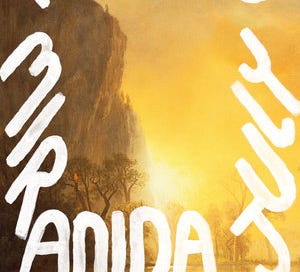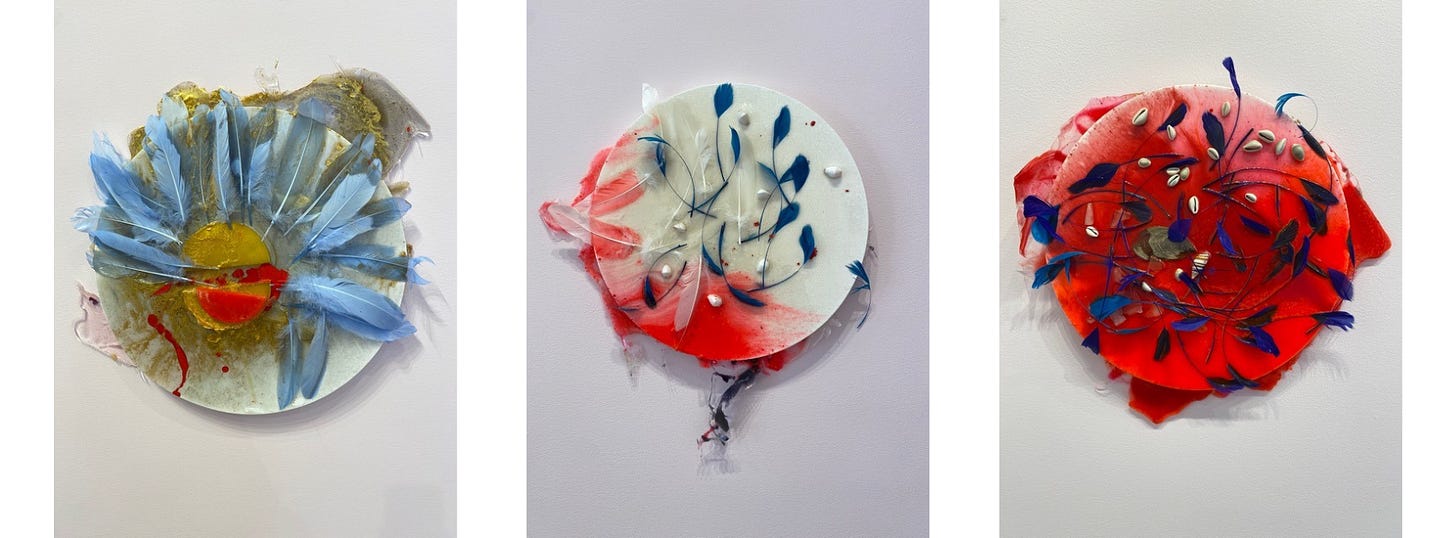Grit, grit, grit: Artmaking in All Fours
So, artmaking as a sustained openness to uncertainty despite, or with, discomfort. But what does that feel like—the inside of an artist’s need, craving, desire—to make art alongside or within a life?
I’m working at a dining room table looking at a couch covered in old towels to protect it from my dog who has taken to sleeping there. But this afternoon she’s passed out by an AC vent in the kitchen floor. It’s in the nineties, and we are on our last Airbnb days, the summer of adventure, of moving to the east coast. I’ve been reading more than writing, and wondering how I’m going to get back into a project. It seems this transition has two parts, starting and continuing. I keep starting.
Writers are often asked, When do you write? By hand or computer? as if the answers might be the sustaining parts. They are means, but the will, where does that ongoingness come from? Sometimes, the continuing can be starting over and over, but it’s hard to notice or appreciate while enduring a pattern that feels like a failure of momentum. There’s a story I love by Peter Ho Davies, “The Ugliest House in the World,” and I remember him explaining that he started writing this story over and over and couldn’t figure it out, and then finally he just put all the beginnings together and they became the story.
I can’t get enough of these artmaking tales of mess and confusion and reveal that comes from just another attempt. It’s not patience, it’s something else.
Stacey D’Erasmo recently asked eight artists how they sustained their creative lives, and her essay collection The Long Run: A Creative Inquiry explores their insights and her own experiences with writing, love, and community. In their artmaking, D’Erasmo notices:
What I see in artists and writers whose practices have stayed alive over the long run is that Keatsian capacity to dwell in uncertainty, in what are often irresolvable tensions.
Keats wrote in a letter about this concept of negative capability, that an artist be “capable of being in uncertainties, Mysteries, doubts, without any irritable reaching after fact & reason.” And here’s another duality: the presence to observe without defining, and the compulsion to explain with logic and fact (which must be resisted).
So, artmaking as a sustained openness to uncertainty despite, or with, discomfort. But what does that feel like—the inside of an artist’s need, craving, desire—to make art alongside or within a life?
Miranda July tells us in All Fours, her novel about an L.A. artist, wife, and mother redefining sexual, physical, and marital shapes mid-life. July’s unnamed narrator describes her artmaking in the first pages:
I’m not a household name…picture a woman who had success in several mediums at a young age and has continued very steadily… One leg of my desk is shorter than the others and every day for the past fifteen years I've meant to wedge something under it, but every day my work is too urgent.
“Continued” and “very steadily” show her work as a practice, and the lopsided desk she ignores for fifteen years her passion. She and her music producing husband are both workaholics, but her roles as wife and mother challenge her freedom while he continues to move between spaces with ease.
She walks on eggshells in her marriage believing one day their relationship will bloom, but in the meantime, she’s not expressing what she feels and wants. And culturally, motherhood pins her down with shame and precarity despite a close relationship with her child that has nothing to do with social measurements. Time with her friend Jordi offers bits of freedom, and she sees a parallel to her artmaking:
[T]hen, when you are free, like when I was eating dessert with Jordi, it feels really, really good, like a drug high. So: grit, grit, grit, then: release. Joy. This works especially well for a life built around grueling self-discipline culminating in glittery debuts and premieres. Grit, grit, grit, then: tada!
A capacity for self-discipline learned in artmaking transfers over to her wife and mother roles. An art practice sustaining a life practice. But she’s expressing herself in her work and then sharing in “glittery” moments, whereas home has become a continuous hiding out.
On her drive to New York to celebrate her forty-fifth birthday in a week of indulgence at the Carlyle Hotel, she stops just outside L.A. at a motel in Monrovia, where she pursues a younger man and never makes it to New York. Desire upends her plans; she opens up to him:
I was trying to explain what my work meant to me. How life, usually so frustratingly scattered and elusive, came under my spell; I could name each thing, no matter how obscure, and it would open to me as if it loved me. Working was a romance with life and like all romances always seemed on the verge of ending, was always out of my control.
Artmaking as “romance with life” doesn’t expand on Keats’ negative capability but sees the process, the artist’s access, from another point of view. She describes an intimacy with work that I think gets to why we have the capacity to start over and over, to continue in whatever form. We may even like the feeling that we are about to lose the thread, that it might disappear, the wishing for more certainty and yet carrying on into the unknown. There’s love, desire, and belief in romance, alongside any doubts. And yet the frustrations are real, those thwarted desires for control, I try to remember they are not obstacles, but part of the artmaking.
I will start again.
I tried not to reveal too much about July’s novel, All Fours is an experience and I recommend it!
All my best and till next time,
Kelly
Recommended:
• I wrote about July creating a home on Instagram and the community she invited into her project—another overlap between art and life, or melding—and this homemaking happened in the months before the publication of All Fours.
• Are You An Artist? Alexandra Schwartz on the latest books by Stacey D’Erasmo and Adam Moss interviewing artists about their work and creative life.
• LARB Radio Hour, Los Angeles Review of Books editors interview authors, recommend books, talk about culture.
• The Grief Paintings by Helen Marden at Gagosian, NYC, Marden’s series of small circular paintings made of resin, ink, feathers, shells; and the vibrant yellows of nikki terry’s summer show at Anita Rogers Gallery, Tribeca.







